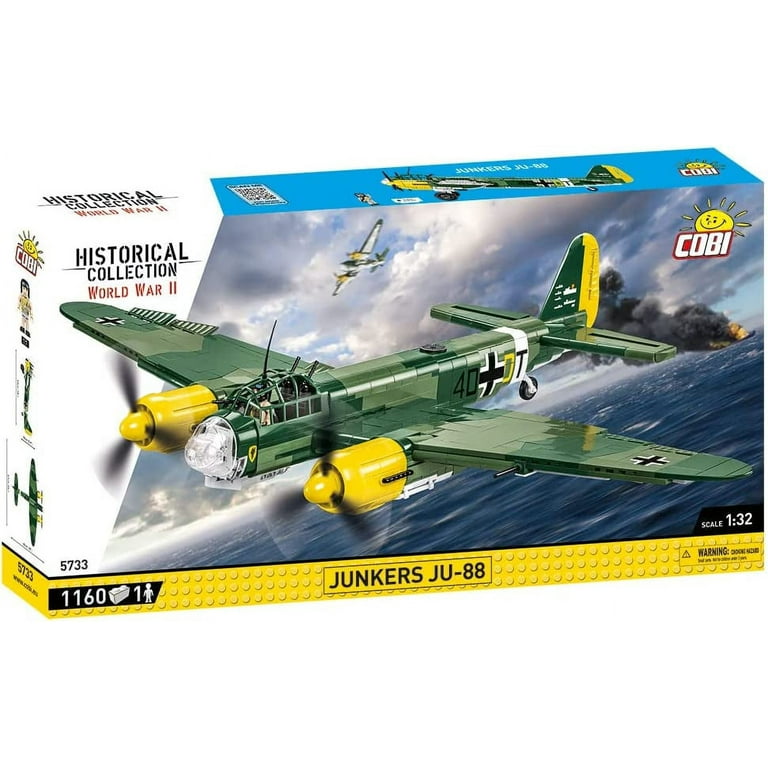In the realm of modern warfare, the term WW 88 has emerged as an important concept, representing a blend of advanced military strategies, technological innovations, and the ever-evolving nature of conflict. As nations grapple with the complexities of geopolitical tensions and the dynamics of warfare in the 21st century, understanding WW 88 becomes crucial for policymakers, military strategists, and scholars alike. This article delves into the various aspects of WW88, exploring its significance, features, implications, and future trajectory in global military engagements.

Read more – WW 88
The Historical Context of WW 88

The concept of WW 88 is rooted in historical precedent, drawing parallels from previous conflicts that have shaped contemporary military doctrine.
Wars of the Past
Understanding WW 88 necessitates a look back at the wars that laid the groundwork for modern military strategies. From the World Wars to more recent conflicts, each war has contributed to the evolution of tactics, weaponry, and overall military organization.
The World Wars introduced mass mobilization, mechanized warfare, and the use of aerial combat, which significantly altered the battlefield landscape. Subsequently, the Cold War era saw the development of nuclear arsenals and proxy wars, giving rise to a different approach to conflict resolution.
The Cold War Influence
The Cold War had a profound impact on military strategies that eventually led to the emergence of WW 88. The arms race between superpowers fostered an environment where technological advancements took precedence. This competition resulted in weapons of unprecedented destructive capability and strategic doctrines focused on deterrence rather than direct confrontation.
The ideological divide also influenced military alliances and interventions around the world, paving the way for a multi-faceted approach to warfare that would define later conflicts.
Lessons Learned
The lessons learned from past wars have been instrumental in shaping the principles behind WW 88. Military leaders have increasingly recognized the importance of adaptability, intelligence gathering, and the integration of technology into warfare. These insights inform current military strategies and operational planning, emphasizing the need for agility and foresight in responding to dynamic threats on the global stage.
Key Features of WW 88

WW 88 is characterized by several distinctive features that differentiate it from earlier forms of warfare.
Technological Integration
One of the most prominent aspects of WW 88 is the integration of cutting-edge technologies into military operations. The proliferation of artificial intelligence, drones, cyber capabilities, and advanced weapon systems has transformed how wars are fought.
Artificial Intelligence (AI) plays a vital role in modern military strategies by enabling predictive analytics, autonomous systems, and enhanced decision-making processes. AI-powered tools assist military personnel in assessing battle scenarios, optimizing logistics, and improving overall situational awareness.
Drones have revolutionized aerial combat and surveillance, allowing for precision strikes with minimal risk to human operators. Their versatility in reconnaissance and combat roles exemplifies the shift towards unmanned warfare.
Cyber Warfare
As societies become increasingly interconnected through technology, cyber warfare has emerged as a critical component of WW 88. State-sponsored hacking, information manipulation, and cyber espionage represent new frontlines in modern conflicts.
Cyber warfare extends beyond traditional military engagement, targeting critical infrastructure, financial systems, and public trust. Consequently, nations must bolster their cybersecurity measures to safeguard against both state and non-state actors seeking to exploit vulnerabilities.
Hybrid Warfare
Another significant feature of WW 88 is the rise of hybrid warfare, which combines conventional military tactics with irregular methods. This approach blurs the lines between war and peace, making it challenging to attribute actions to specific actors.
Hybrid warfare often involves the use of proxy forces, psychological operations, and disinformation campaigns. By employing a multifaceted strategy, belligerents can achieve their objectives while minimizing direct confrontation.
Globalization of Conflict
The globalization of conflict further complicates the landscape of WW 88. Modern conflicts often transcend national boundaries, involving a myriad of actors with diverse motivations and goals.
Globalization facilitates the flow of weapons, resources, and ideologies, enabling various groups to engage in warfare across regions. As a result, conflicts may escalate into larger-scale confrontations, threatening regional stability and international security.
The Role of International Institutions in WW 88

International institutions play a pivotal role in managing conflicts and maintaining global stability amid the challenges posed by WW 88.
United Nations and Peacekeeping Efforts
The United Nations (UN) remains a key player in addressing the complexities of modern warfare. Through peacekeeping missions, the UN aims to mitigate conflict, protect civilians, and facilitate dialogue among warring parties.
Peacekeeping operations have evolved significantly since their inception, adapting to the changing nature of conflicts. Contemporary missions often involve multidimensional mandates that encompass not only military presence but also humanitarian assistance, governance support, and capacity-building efforts.
Regional Organizations
Regional organizations, such as NATO, the African Union, and the Organization of American States, also contribute to managing conflicts in their respective areas. These organizations foster cooperation among member states, facilitating collective security arrangements and diplomatic negotiations.
By leveraging regional partnerships, these organizations can respond swiftly to emerging crises, reinforcing the principle of collective defense and mitigating potential escalations.
The Challenge of Non-State Actors
The rise of non-state actors presents a unique challenge for international institutions operating within the framework of WW 88. Armed groups, terrorist organizations, and transnational criminal networks often operate outside traditional state structures, complicating conflict resolution efforts.
International institutions must adapt their approaches to engage with these entities and address the root causes of violence. Diplomatic initiatives, economic development, and community engagement can serve as effective tools for countering non-state actor influence and promoting stability.
The Implications of WW 88 for National Security
The evolving landscape of WW 88 has significant implications for national security strategies and defense planning.
Strategic Adaptation
Nations must continually adapt their military strategies to remain relevant in the face of evolving threats. Traditional notions of deterrence and defense must be reexamined, incorporating concepts such as cybersecurity, hybrid warfare, and asymmetric tactics.
This requires a holistic approach to national security that transcends military capabilities, encompassing diplomacy, intelligence sharing, and collaboration with allies. Nations must prioritize investments in emerging technologies and innovation to enhance their competitive edge on the global stage.
Resource Allocation
The realities of WW 88 necessitate careful resource allocation to ensure military readiness and resilience. Governments must balance defense spending with other societal needs, recognizing the interconnectedness of security, economic stability, and social cohesion.
Furthermore, the allocation of resources should reflect the asymmetrical nature of modern conflicts, prioritizing capabilities that address unconventional threats and hybrid warfare scenarios.
Public Perception and Support
Public perception plays a crucial role in national security strategies, particularly in the age of social media and instant communication. The ability to shape narratives and rally public support for military interventions hinges on effective communication and transparency from government officials.
Moreover, the increasing visibility of warfare through media coverage raises ethical considerations surrounding civilian casualties and humanitarian concerns. Nations must navigate these issues carefully to maintain legitimacy and support both domestically and internationally.
Future Trajectories of WW 88
Looking ahead, the future of WW 88 is likely to be shaped by several trends and developments.
Advancements in Military Technology
The ongoing advancement of military technology will continue to redefine warfare in the years to come. Innovations in robotics, AI, quantum computing, and biotechnology hold the potential to revolutionize military operations, enhancing capabilities and altering traditional paradigms.
As nations invest in research and development, the arms race will persist, prompting a new wave of technological breakthroughs that could reshape the very nature of conflict itself.
Climate Change and Resource Scarcity
Climate change is emerging as a significant factor influencing global conflict dynamics. As natural resources become increasingly scarce due to environmental degradation, nations may find themselves vying for access to essential commodities such as water and arable land.
These resource-driven conflicts pose considerable risks, requiring proactive measures to address underlying grievances and promote sustainable practices. The interplay between climate change and national security will become an increasingly important consideration in future policymaking.
Rise of Multipolarity
The shift towards a multipolar world, characterized by the emergence of multiple power centers, will impact the dynamics of WW 88. As nations assert their influence, traditional alliances may shift, leading to new coalitions and rivalries.
In this context, diplomacy and negotiation will take center stage as nations navigate complex geopolitical landscapes. Effective multilateral engagement will be essential for fostering cooperation and preventing potential flashpoints from escalating into full-blown conflicts.
FAQs
What does WW 88 stand for?
WW 88 refers to the concept of modern warfare characterized by technological advancements, hybrid strategies, and the evolution of conflict dynamics. It encompasses the integration of AI, cyber warfare, and non-state actors in contemporary military engagements.
How has technology changed the nature of warfare?
Technology has revolutionized warfare by introducing advanced weaponry, automation, and cyber capabilities. Innovations such as drones, artificial intelligence, and cybersecurity measures have transformed tactical operations and strategic planning.
What role do international institutions play in modern warfare?
International institutions, like the United Nations, facilitate conflict resolution, peacekeeping, and diplomatic negotiations. They work to manage global stability amid the complexities of modern warfare, including hybrid and non-state actor conflicts.
How can nations prepare for the challenges of WW 88?
Nations can prepare by adopting adaptive military strategies, investing in emerging technologies, and enhancing collaboration with allies. A holistic approach to national security that considers diplomatic, economic, and social factors is essential for addressing modern threats.
What are the future trends in warfare?
Future trends in warfare include advancements in military technology, the impacts of climate change on resource scarcity, and the rise of a multipolar world order. These factors will shape the trajectory of conflicts and require innovative solutions for conflict prevention and resolution.
Conclusion
WW 88 represents a paradigm shift in the landscape of modern warfare, characterized by technological integration, hybrid strategies, and globalized conflict dynamics. As nations grapple with the implications of this evolving reality, understanding the historical context, key features, and future trajectories of WW 88 becomes essential for effective policymaking and military strategy. By embracing adaptability, resource allocation, and international collaboration, nations can navigate the complexities of contemporary warfare and strive for a more secure and stable world.
Contact
Website: https://ww881.net/
Email: ww881.net@gmail.com
Phone number: +84968365220
Address: 14 Street No. 4, An Lac, Binh Tan, Ho Chi Minh, Vietnam

